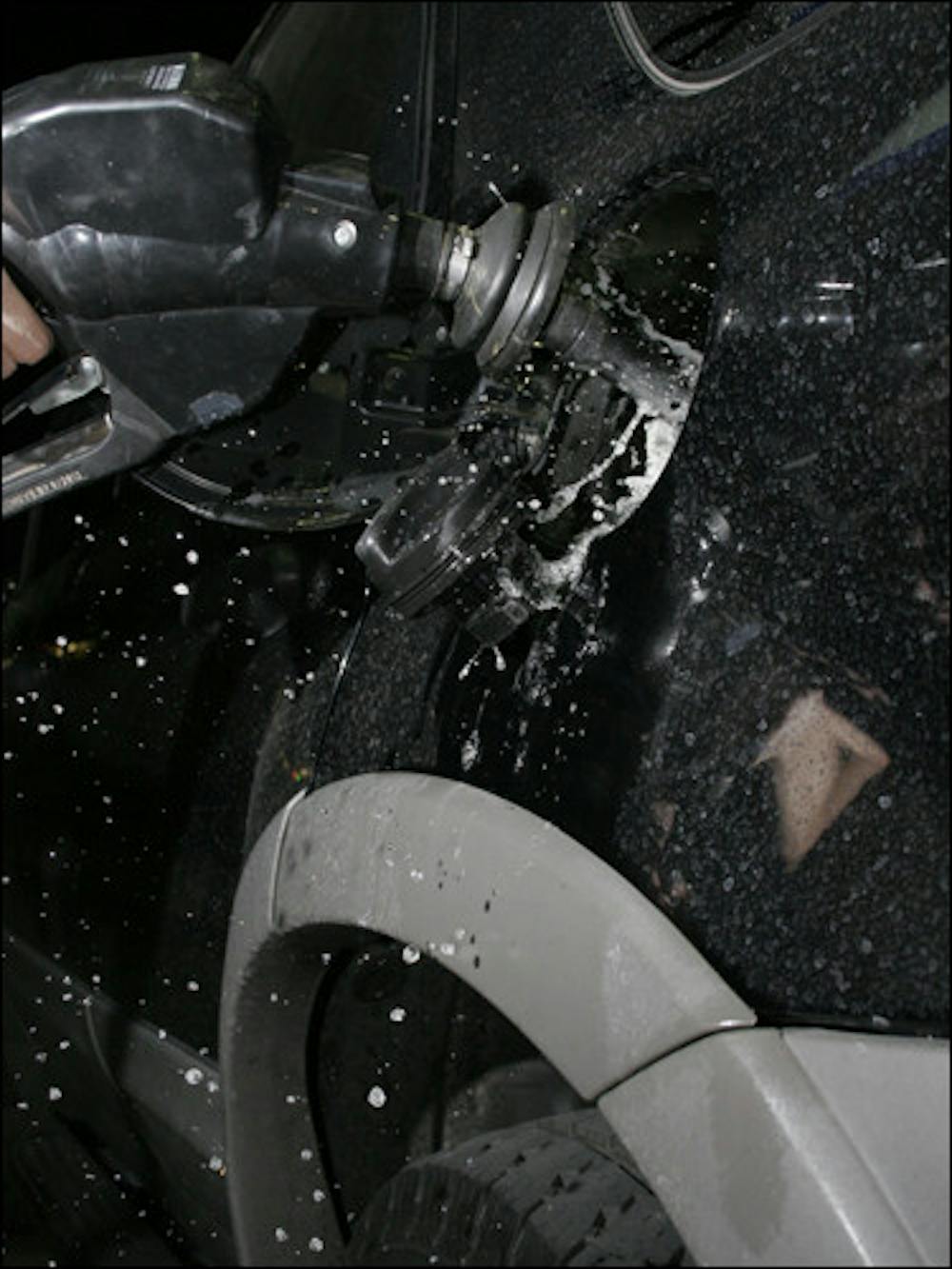A struggling U.S. economy, the low cost of a barrel of oil and decreased oil speculation are all contributing to record drops in gas prices.
Prices dropped about 60 cents per gallon from last month with a statewide average of $2.87 on Monday and signs of a continued decline, AAA spokeswoman Michelle Donati said.
A weak economy is a big factor behind the decline since demand for gasoline has softened, Donati said.
Over the summer, gasoline prices peaked in Arizona at an average of about $4.09 per gallon, she said.
Typically, there is a decline in the price of gas between summer and fall because motorists tend to drive less and settle into a routine, she said.
Additionally, there is a healthy supply of oil to the U.S., and the cost of a barrel of oil is trading in the $60 range — compared to a summer peak of nearly $150 per barrel, she said.
Tim James, an economics professor in the W.P. Carey School of Business, said oil speculators are partly to blame for the rise in gasoline costs, and less speculation for the future cost of oil will result in lower gas prices.
“People have stopped speculating like crazy on oil prices,” James said. “That was what was driving the price up.”
There is also a lag between drops in the cost of oil and the cost of gasoline because of the way contracts are structured, he said.
Despite the drop in the cost of gasoline, demand for gasoline is lower than usual in the Valley and nationwide — with demand dropping about 4.3 percent nationwide, Donati said.
“We’re still seeing demand remain weak,” she said. “That can largely be attributed to the economy.”
Over the summer, biochemistry sophomore Brittany Bowen said she had to adjust her driving habits in her 32-mile-per-gallon car just to make up for the increased price of gas.
Bowen, who makes an hour long drive from Laveen to the Tempe campus each day, said the price decline has been a relief.
Even a fuel-efficient car strains her pocketbook when it comes to commuting to campus, she said.
“I still fill up my tank at least every two weeks,” she said. “I hope that gas prices keep going down.”
Bowen said she had to avoid driving on weekends because of the gas prices above $4 per gallon.
Donati said during the summer, many gas stations had to sell gas at a price that was lower than the cost of providing the gasoline itself — which includes marketing, distribution and employee costs.
“Gasoline isn’t typically what gas stations make their money from,” she said. “They use gasoline to get people to come into their stores and buy merchandise.”
Still, most gas stations are now able to make a small profit on the fuel they sell, Donati said.
“There was a point during the summer where they were operating on a negative, but they have improved,” she said.
James said that as gasoline prices decline, they will begin to reflect more accurately the price of oil. Gasoline could reasonably sell for $2.50 per gallon in about a month, he said.
“Now what we’ll get is a bit more reality: The prices are going to reflect what’s going on in the world economy,” James said. “Things are not good out there with the world economy.”
Reach the reporter at matt.culbertson@asu.edu.




